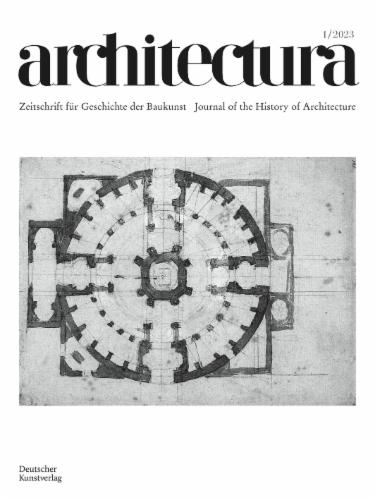
Schwache Ecken
Sebastian Bietenhader and Matthias Moroder
From the Journal: architectura
Published online:
19 May 2025
Abstract
Contrary to the view that in the history of architecture, there is no explicitly formally articulated public housing as such, the architecture of Red Vienna has indeed produced specific architectural forms of public building. In its settlements the treatment of the corner of the block plays an important role. The corner, one of the most prominent and economically valuable parts of the bourgeois perimeter-block, is often weakened in the architecture of Red Vienna through various types of volumetric recesses. The clarity of the urban gesture, which gives the public realm more space by foregoing the maximum envelope, stands in contrast to the variety of the differing recess-articulations. On the basis of twelve examples, weak corners are typologically analysed and conceptually differentiated. This underexposed area of Red Vienna’s architecture is not dealt with exhaustively here, instead it shows possible access points to the question of recognisably public architecture.
Contrary to the view that in the history of architecture, there is no explicitly formally articulated public housing as such, the architecture of Red Vienna has indeed produced specific architectural forms of public building. In its settlements the treatment of the corner of the block plays an important role. The corner, one of the most prominent and economically valuable parts of the bourgeois perimeter-block, is often weakened in the architecture of Red Vienna through various types of volumetric recesses. The clarity of the urban gesture, which gives the public realm more space by foregoing the maximum envelope, stands in contrast to the variety of the differing recess-articulations. On the basis of twelve examples, weak corners are typologically analysed and conceptually differentiated. This underexposed area of Red Vienna’s architecture is not dealt with exhaustively here, instead it shows possible access points to the question of recognisably public architecture.
Other articles in this issue:
architectura Issues
Volume 53 (2025)
Volume 52 (2022)
Volume 51 (2021)
Volume 50 (2020)
Volume 49 (2019)
Volume 48 (2018)
Volume 47 (2017)
Volume 46 (2016)
Volume 45 (2015)
Get instant, unlimited access to this journal
Related titles
Would you like to receive monthly information about new publications and events?

